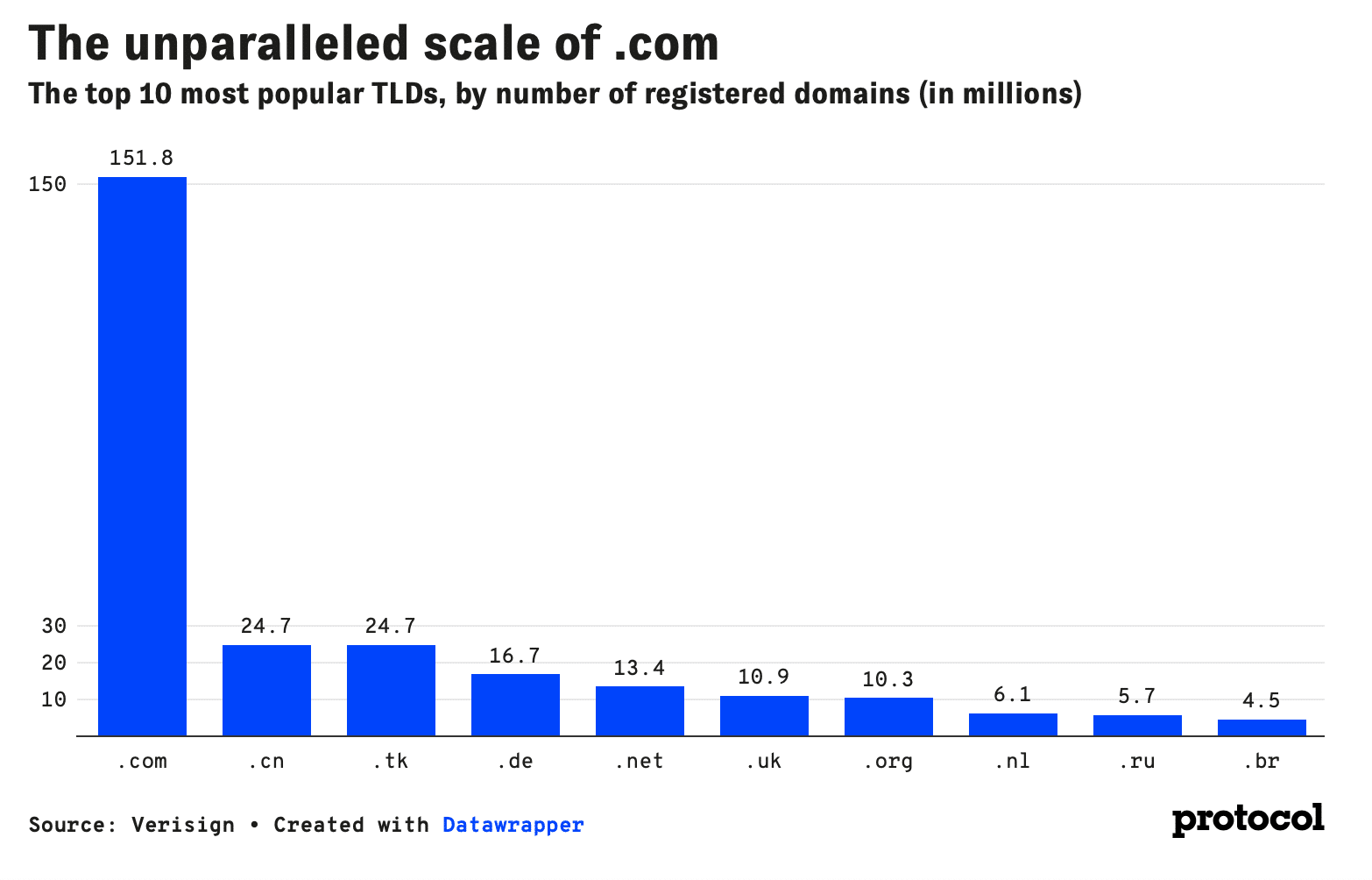David Pierce recently wrote a great article spinning off the recent sale of Angel.com and touching on how .com has developed over time and the effect it has on business globally. Here are some takeaways, do spend the time to read the full article, it is worth it.
Neal and Jeff Harmon, brothers and co-founders of VidAngel, decided a while ago that it was time for a rebrand. They had been sued over VidAngel’s initial business — a way to automatically skip objectionable content in movies and shows — and were looking both to move on and to focus on the in-house content that was clearly VidAngel’s future.
Early in the branding process, they discovered that VidAngel failed a simple test: If you told it to someone, could they remember it well enough to tell someone else or find it on Google? VidAngel passed about 58% of the time, which wasn’t enough. “We’ve seen over time,” Neal said, “that about 50% of our traffic comes through word-of-mouth. People hear about it, but then they end up having to type the domain.”
One name did much better: Angel. A full 95% of people could remember, share and find that name. It also fit perfectly with the company’s crowdfunding ethos, and its focus on uplifting content. So VidAngel decided to become Angel Studios.

Your name is an extension of your brand, and it can reinforce the value you provide or distance you from it. Make sure you have the best one. VidAngel passed about 58% of the time, which wasn’t enough..We’ve seen over time, that about 50% of our traffic comes through word-of-mouth. People hear about it, but then they end up having to type the domain.” One name did much better: Angel. A full 95% of people could remember, share and find that name.
Neal Harmon, Co-founder of VidAngel
Now they needed a new domain name. The Harmons snapped up angelstudios.com, angelstudios.tv, everything they could think of. They decided to use an.gl as their URL shortener, and were excited about it. But none of it felt quite right. It all still felt too long and too hard to remember.
On March 30, Dave Evanson, a sales and brokerage consultant at Sedo, tweeted music to the Harmon brothers’ ears: “Angel .com now under exclusive contract @sedo for sale!” Two weeks later — a flash in the domain-investing world — Angel Studios had reached a deal to acquire the name. The price? $2 million.
For that price, Angel could have registered angel.inc ($2,500), angel.fun ($1,650), angel.buzz ($600), angel.llc ($3,250), angel.fan ($90) or angel.movie ($50), all of which are available right now. It could have acquired angel.live, angel.show or even angel.studio. It could have bought all of them, and still saved itself roughly $1.9 million.
But to hear the Harmons explain it, buying angel.com was the cheaper option by far. “Anything that doesn’t pass the stress test ends up being more expensive, not less,” Jeff said. “There’s a question, every time you share it!” Neal cut in. “‘That’s a URL?’ And as soon as you have a question in your head, there’s confusion.”
They ran the numbers on trying to imprint an.gl or angel.studio in the world’s heads, and decided $2 million was a bargain by comparison. It was .com or bust.
More than 35 years after the first .com domain was registered by Symbolics Inc., those three letters continue to dominate the internet. “If you don’t own the .com, you will forever have to talk about yourself by using the full extension of your domain name,” said Paul Nicks, the vice president of aftermarket sales at GoDaddy.

If you were protocol.news, or dot-whatever, your entire branding strategy going forward is you have to include the complete URL. If you call yourself Protocol, people just go to protocol.com.
Paul Nicks, VP GoDaddy
More new startups than ever are embracing the not-com lifestyle, but mostly out of necessity. And those who can afford the dot-com nearly always get it. “The dot-com is great,” the investor Jason Calacanis said, “and having inside.com, thesyndicate.com and having invested in Calm.com, I can tell you folks love a great one-word domain!” His advice to startups is simple: “If you can get the dot-com for your company for $10K to $100K, it’s generally worth it.” This is fairly common advice in the tech industry. “If you have a U.S. startup called X and you don’t have x.com, you should probably change your name,” Y Combinator’s Paul Graham wrote in 2015. “Unless you’re so big that your reputation precedes you, a marginal domain suggests you’re a marginal company.”
You’re not going to see a one-word dot-anything else sell for a million dollars. But I see a one-word dot-com sell for a million dollars all the time.
Paul Nicks, VP GoDaddy
Domain names have become a practically unkillable thing on the internet. For a time, it felt like search and social platforms would make them irrelevant. Instead, they only became more important. A glut of TLDs made the most memorable ones all the more desirable. And while there’s a new generation of companies following the dot-com boom strategy of naming themselves after their domains — x.ai is a much-cited example — more often companies will be companyhq.com or companyapp.com, because the .com is everything.
And then, when they get big and successful enough, like the team at Angel Studios, they’ll take some of their spoils and make a giant offer on the perfect domain. Because you still haven’t made it until you have the .com.
Verisign, which runs the TLD, reported that there are 151.8 million .com domains, more than the rest of the top 10 TLDs combined. In the most recent quarter, it processed 11.6 million new domain name registrations for .com and .net. (And that’s about a decade and a half after all the good names have been gone.) Nicks said that GoDaddy’s data shows about 70% of people in the U.S. buy .com domains, with everything else combining for 30% of the market. (It’s inching toward 50/50 internationally, though.) The secondary market is even more lopsided: It’s about 90% .com domains, 10% everything else.
GoDaddy’s data shows about 70% of people in the U.S. buy .com domains, with everything else combining for 30% of the market. (It’s inching toward 50/50 internationally, though.) The secondary market is even more lopsided: It’s about 90% .com domains, 10% everything else.


Previous Next